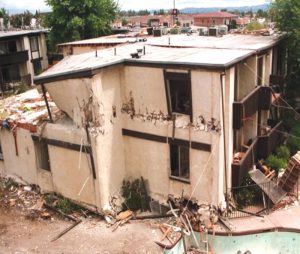The scientific method is best described as a series of sequential steps: Question, Research, Hypothesis, Experiment, Observation, and Conclusion. If the hypothesis is “proven” through experiment and observation, the Conclusion becomes a Theory generally supported and accepted by other subject-matter experts. This process takes time and effort and cannot be rushed.
However, in today’s fast-paced, 24-hour news cycle, rarely is enough time allotted for all the steps to be taken, particularly the experiment part. We all want answers fast and show little patience for delays that are warranted. The interpretation of data, or more often the observation of patterns in the data, is now referred to in the public sphere as “the science” and is used as the basis for making public policy on the fly. “From where I stand, the earth looks flat, so it must be” is a good example of observational data masquerading as science. Unfortunately, this process can result in un-tested hypotheses becoming public policy.
One could argue that if society is trying to make advancements quickly or address critical challenges (whether it is health policy or building codes), relying on observational data is better than waiting for the science to become “settled.” Since most policymakers are, by nature, cautious and risk-averse, it may seem safer to over-estimate the risk while demonstrating an eagerness to act, thereby showing a degree of caring rather than waiting for the scientific process to run its course. But this approach can have unintended consequences. Either the policy will bounce around and change as new information is learned, or the policy will be overly conservative and wasteful, maybe even detrimental. No one wants to be caught looking unprepared and indifferent to the public interest, but the cost to the public can be high in both situations and erode public confidence. The next time policymakers need to reach the public with an important message, who knows what the response will be. After the balcony collapse that killed several students in Berkeley, California, several years ago, there was a desire by many to take immediate action in the form of stricter building code provisions. Cooler heads prevailed, and the result was the implementation of new inspection requirements. In hindsight, this was probably the right thing to do.

Let’s use a small part of earthquake engineering to demonstrate how the scientific method was used successfully to develop improved seismic design procedures and form public policy. All the steps were taken, and science led the way, whichever road it took.
The field of earthquake engineering in the U.S. as we know it today started in the 1950s thanks to a small group of practicing engineers and academics located mainly in California. This group had an excellent understanding of structural dynamics. They used their knowledge to craft the early seismic code provisions, the basis of which is described in the Structural Engineers Association of California (SEAOC) Blue Book: Seismic Design Recommendations, first published in 1959. At the outset, the leaders, including Henry Degenkolb and his cohorts, and later, university researchers including Professors Egor Popov and Vitelmo Bertero at the University of California, Berkeley, questioned the status quo and decided to do something about it. They developed questions about seismic performance (Question and Research), developed theories on how buildings should perform (Hypothesis), and then went to the sites of a steady stream of strong earthquakes in regions with similar buildings (Experiment) to see (Observation) whether they were correct and to gather more data. This process led to new building code provisions (Conclusion and Theory) adopted after public notice, debate, and approval by elected officials. The 1971 San Fernando and 1994 Northridge earthquakes (see STRUCTURE’s 2019 article series) provided data for new lines of scientific inquiry and research and caused many engineers to question the established theory. After a few years of reflection, discussion, and study, new conclusions and theories were reached in each case.
While building codes (public policy) were revised and expanded, there were parallel scientific method efforts by many dedicated structural engineers, researchers, and government officials to “push the envelope” and advance the state of knowledge in earthquake engineering. Their contributions and conclusions are presented in these important, groundbreaking documents:
ATC-3 Tentative Provisions for the Development of Seismic Regulations for Buildings, A Cooperative Effort with the Design Professions, Building Code Interests and the Research Community (Applied Technology Council, 1978) – proposed an outline for the building codes used today.
ATC-14 Evaluating the Seismic Resistance of Existing Buildings (1987) and FEMA 273 NEHRP Guidelines for the Seismic Rehabilitation of Buildings (Federal Emergency Management Agency, 1997) – established procedures for evaluating and retrofitting existing buildings.
Vision 2000 Performance-Based Seismic Engineering of Buildings (Structural Engineers Association of California, 1995) – proposed a framework for performance-based, rather than prescriptive, design.
The field of earthquake engineering was used here to showcase the scientific method and how it can and ought to form the underpinning of public policy. It has been established that the scientific method produced significant advancements as used by the pioneers in this field. Without the efforts of these engineers and researchers, structures might still be designed using a process akin to trial and error. This example should also serve as a reminder of why experts should be at the head of the table when public policy decisions are made, ensuring the basis of those policies will not be observational data masquerading as science, but the real thing.■
